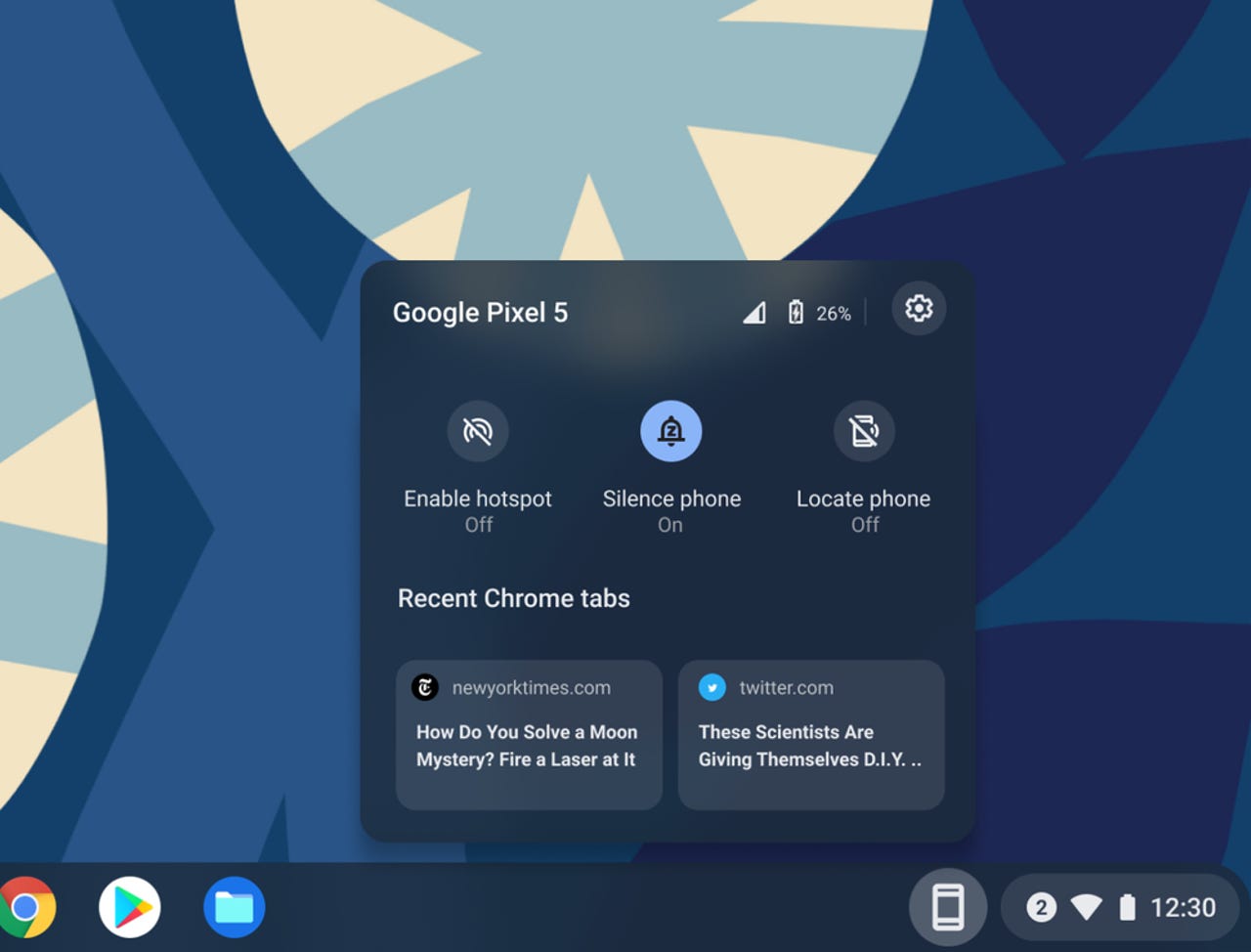Google rolls out Phone Hub, other new features for Chrome OS


Google on Tuesday announced a set of new features for the Chrome operating system, largely focused on helping people stay productive while using multiple devices. Those new features include the Phone Hub -- an interface that allows you to control the key features of your Android device from your Chromebook.
The new features come on the 10th anniversary of the Chromebook, which gained popularity initially in the education sector. When Chromebooks were launched with Acer and Samsung in 2011, they were largely secondary devices for people, noted John Maletis, head of product and UX for Chrome OS.
They've since undergone a "huge shift" to become the primary device for users, Maletis told reporters on Tuesday. In addition to serving the education sector, Google now targets general consumers and people using Chromebooks for work. One in 10 desktop devices sold globally run on Chrome OS, Maletis said, as do one in five sold in the US. This past year, it became the second-most popular desktop operating system.
"It's amazing to see how modern computing has evolved," he said. One key part of that evolution, he said, is the use of multiple devices. "Unlike the past, our expectation is we should have access to our data and a consistent experience across these surfaces."
Some of the latest features for Chrome OS are focused on facilitating that experience. The Phone Hub serves as a sort of "control center" for Android devices. At the top of the application, users can see information related to the status of their phone, such as battery life and cellular connections. Below that, the user can find quick actions to take, such as instant tethering, a "find your device" function and "do not disturb." Phone Hub lets you turn on notifications, so you can receive messages sent to your phone, as well as respond to them from your Chromebook.
In the coming months, Google will be rolling out Nearby Share, to let users instantly and securely share files between your Chromebook and other Chrome OS or Android devices. It works offline, and there's no need to share contact details.
Google has also extended Wi-Fi Sync to work with more devices, so you can sync your Chromebook credentials not only with another Chromebook but Android devices as well, and visa versa. Once you've used a wi-fi network on one device, when you sign into the same Google Account on another device, there's no need to enter wi-fi credentials again.
Chrome OS is also getting a series of time-saving and productivity-focused features and capabilities. For instance, the Chromebook setup has been streamlined so that parents setting up a child's personal Google Account (managed with Family Link) can also immediately add a school account. The child can use school apps like Google Classroom, while parents can use Family Link to maintain controls on the device.
There's a new Screen Capture tool in the Quick Settings menu that lets you take precise screenshots and screen recordings. Screenshots are automatically clipped to the clipboard. The Clipboard has been enhanced to hold onto the last five things copied, so you don't have to flip back and forth between documents.
There's also a space called Tote that gives quick and easy access to pinned files that you may need to access frequently, as well as recent downloads and recent screen captures.